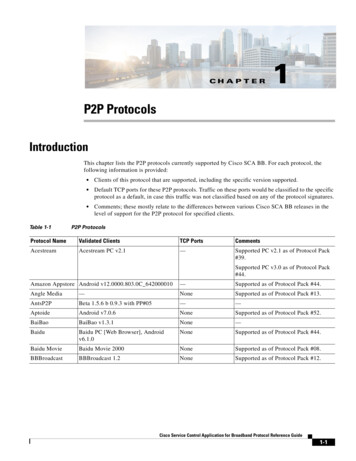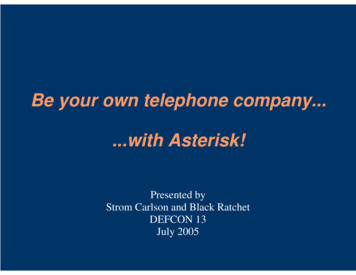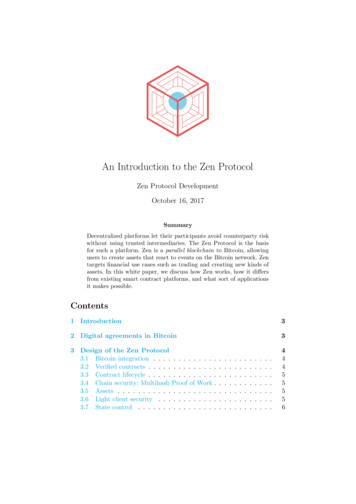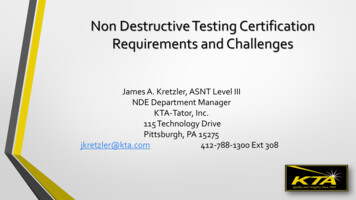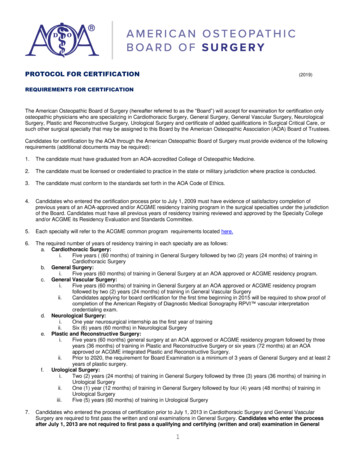
Transcription
PROTOCOL FOR CERTIFICATION(2019)REQUIREMENTS FOR CERTIFICATIONThe American Osteopathic Board of Surgery (hereafter referred to as the “Board”) will accept for examination for certification onlyosteopathic physicians who are specializing in Cardiothoracic Surgery, General Surgery, General Vascular Surgery, NeurologicalSurgery, Plastic and Reconstructive Surgery, Urological Surgery and certificate of added qualifications in Surgical Critical Care, orsuch other surgical specialty that may be assigned to this Board by the American Osteopathic Association (AOA) Board of Trustees.Candidates for certification by the AOA through the American Osteopathic Board of Surgery must provide evidence of the followingrequirements (additional documents may be required):1.The candidate must have graduated from an AOA-accredited College of Osteopathic Medicine.2.The candidate must be licensed or credentialed to practice in the state or military jurisdiction where practice is conducted.3.The candidate must conform to the standards set forth in the AOA Code of Ethics.4.Candidates who entered the certification process prior to July 1, 2009 must have evidence of satisfactory completion ofprevious years of an AOA-approved and/or ACGME residency training program in the surgical specialties under the jurisdictionof the Board. Candidates must have all previous years of residency training reviewed and approved by the Specialty Collegeand/or ACGME its Residency Evaluation and Standards Committee.5.Each specialty will refer to the ACGME common program requirements located here.6.The required number of years of residency training in each specialty are as follows:a. Cardiothoracic Surgery:i.Five years ( (60 months) of training in General Surgery followed by two (2) years (24 months) of training inCardiothoracic Surgeryb. General Surgery:i.Five years (60 months) of training in General Surgery at an AOA approved or ACGME residency program.c. General Vascular Surgery:i.Five years (60 months) of training in General Surgery at an AOA approved or ACGME residency programfollowed by two (2) years (24 months) of training in General Vascular Surgeryii.Candidates applying for board certification for the first time beginning in 2015 will be required to show proof ofcompletion of the American Registry of Diagnostic Medical Sonography RPVI vascular interpretationcredentialing exam.d. Neurological Surgery:i.One year neurosurgical internship as the first year of trainingii.Six (6) years (60 months) in Neurological Surgerye. Plastic and Reconstructive Surgery:i.Five years (60 months) general surgery at an AOA approved or ACGME residency program followed by threeyears (36 months) of training in Plastic and Reconstructive Surgery or six years (72 months) at an AOAapproved or ACGME integrated Plastic and Reconstructive Surgery.ii.Prior to 2020, the requirement for Board Examination is a minimum of 3 years of General Surgery and at least 2years of plastic surgery.f. Urological Surgery:i.Two (2) years (24 months) of training in General Surgery followed by three (3) years (36 months) of training inUrological Surgeryii.One (1) year (12 months) of training in General Surgery followed by four (4) years (48 months) of training inUrological Surgeryiii.Five (5) years (60 months) of training in Urological Surgery7.Candidates who entered the process of certification prior to July 1, 2013 in Cardiothoracic Surgery and General VascularSurgery are required to first pass the written and oral examinations in General Surgery. Candidates who enter the processafter July 1, 2013 are not required to first pass a qualifying and certifying (written and oral) examination in General1
Surgery. Note: Those candidates who wish to seek dual certification (example: General Surgery and General VascularSurgery) will be required to take and pass the qualifying and certifying (written and oral) examinations in bothspecialties.8.Following satisfactory compliance with the prescribed requirements for examination, the candidate is required to pass writtenqualifying and oral certifying examinations which shall be designed, constructed and conducted so as to evaluate thecandidate’s understanding of the basic sciences, knowledge of surgical principles and the osteopathic philosophy of surgery asit applies to diagnosis and management of surgical diseases, familiarity with current advances in surgical philosophy andtechniques, possession of valid surgical judgment and a high degree of skill in the diagnostic, operative and therapeuticprocedures involved in the specialty practice.9.For candidates entering the certification process for the first time after January 1, 2006, a qualifying and certifying (written andoral) examination are required. NOTE: In order to enter the final phase of certification, the candidate must have achievedprogram complete status from the Specialty College, and all the documentation requested at the time of originalapplication submission MUST be in the candidate’s file.10. The clinical examination for certification in General Surgery will be waived for those already certified by a three-partexamination in Cardiothoracic Surgery, General Vascular Surgery, Neurological Surgery, Plastic and Reconstructive Surgery,and Urological Surgery provided that:a. Documentation from the American College of Osteopathic Surgeons or the AOA that verifies completion of training in aGeneral Surgery residency is on file with the AOBS.b. General Surgery written and oral examinations were successfully completed.11. Candidates for examination for certification are required to file an application which shall set forth their qualifications forexamination.12. Candidates beginning the certification process for the first time in 1997 and thereafter will be issued a time-dated certificate fora ten (10) year period. All candidates who achieve certification will be automatically registered to enter the OsteopathicContinuous Certification (OCC) process (see Appendix D for additional information). The Board will make available, beginningin the eighth year of certification, the opportunity to take the renewal written examination (formerly referred to as recertification).Subspecialty Certifications (formally known as Certification of Added Qualifications/CAQ)A Subspecialty Certification constitutes a modification of a general certificate or certificate of special qualifications to reflectadditional training of at least one (1) year (12 months) in length and satisfactory completion of a certifying examination in thatfield. The training required for added qualifications must incorporate a specific and identifiable body of knowledge within thebroader practice of the general specialty. Certificates read, “Certification Subspecialty Certification in (added field).”Surgical Critical Care - the candidate must be certified in General Surgery or a surgical specialty and must pass a SurgicalCritical Care written examination after one (1) year (12 months) of ACOS- ,AOA, or ACGME -approved training in SurgicalCritical Care.BOARD ELIGIBILITYDefinition: The time frame when upon completion of an AOA or ACGME- approved training program, osteopathic surgeons areeligible to begin the certification process and to declare their status as board eligible in their specialty.Notification: All residents and fellows in AOA or ACGME-approved programs shall be notified by the Board of the definition anddeadline of board eligibility.Time Frame: Board eligibility commences upon completion of the specialty training program and terminates on December31 of the sixth year following completion of your training program.1.Board eligibility status will automatically be terminated and so recorded by the AOA and the Board:a. At the end of the board eligibility time frame, orb. Following resolution of an appeal, orc. Upon award of certification.2.In view of a candidate’s right to appeal the results of a failed examination, if board eligibility would have terminated as a resultof lapse of the six (6)-year time frame, the designation of board eligible shall not terminate until the appeal has been resolved.3.Candidates may not use the designation of board eligible at any time after the termination of board eligibility.Certification Eligibility1.Candidates are eligible to become certified at any time within the board eligibility time frame.AOBS Protocol for Certification (6/19)-2-
2.Candidates who have initiated the certification process in their specialty by sitting for an examination prior to July 1, 2009 maycontinue to pursue certification at any time (after the board eligibility time frame) based upon the Board’s requirements prior toJuly 1, 2009.3.Candidates who have not initiated the certification process by sitting for an examination in their specialty prior to July 1, 2009may become certified only by successfully completing the certification examination pathway process.4.Candidates who are not successful in becoming certified at the conclusion of the final pathway process are no longer eligible tobecome certified in their specialty.Certification Examination Pathway Process1.Initial Pathwaya.b.c.2.First Re-Entry Processa.b.3.Candidates will be automatically registered for the initial pathway upon completion of the Board’s application process.The Board will accept all applicants who have met the entry requirements into the process.Upon acceptance into the process, the candidate must follow the pathway outlined below. Prior activity towardcertification will not be recognized in the initial pathway process if applicable.i. Candidates must enter at the beginning of the Board’s certification process.ii. Candidates must follow the process as outlined by the Board’s requirements during the six (6) years of boardeligibility.iii. Candidates must complete certification during the six (6) year period of board eligibility.iv. Candidates who have not completed certification during the six (6) year period of board eligibility, their ability tocomplete certification shall terminate and they then may reenter the certification process via the first reentryprocess.Candidates must petition the Board for re-entry into the certification process.Upon acceptance by the Board, the candidate must follow the following process:i. The candidate must start at the beginning of the certification process. Prior activity toward certification will not berecognized in the first re-entry process.ii. Candidates must participate in the first available administration of the qualifying examination.iii. The candidate will have two (2) attempts to pass each step of the examination process.iv. If unsuccessful on a given administration, the candidate must participate in the next available examinationadministration.v. Candidates who were not successful in becoming certified at the end of the first re-entry pathway process maypursue certification only by petitioning the certifying board for entry into the final pathway process.Final Pathwaya.b.c.Candidates must petition the Board for entry into the final pathway process.Upon completion of the requirements, the candidate must follow the pathway outlined below. Prior activity towardcertification will not be recognized in the final pathway process.i. Candidates must enter at the beginning of the Board’s certification process.ii. Candidates must participate in the first available administration of the qualifying examination.iii. The candidate will have two (2) attempts to pass each step of the examination process.iv. If unsuccessful on a given administration, the candidate must participate in the next available examinationadministration.Candidates who were not successful in becoming certified at the end of the final pathway have no further opportunity tobecome certified in their specialty.APPLICATION FOR EXAMINATIONSAll applications submitted by a candidate shall remain the property of the Board.The candidate shall:1. Complete an AOBS online Application2. Submit the required fee(s) with the application. No part of the application fee shall be returned without candidate’s writtenrequest and Board approval. The Board may apply a cancellation fee if the candidate fails to notify the Board at least 30 daysprior to a previously scheduled examination. All cancellations within 30 days the application fee is forfeited. An examination ratesheet is available on the AOBS website.3. The candidate shall demonstrate eligibility for the examination in any other manner required by the Board.Eligibility for the Written Qualifying ExaminationAOBS Protocol for Certification (6/19)-3-
1.EFFECTIVE JULY 1, 2009, NEW CANDIDATES MUST HAVE COMPLETED ALL THE PRESCRIBED YEARS OF AN AOAAPPROVED RESIDENCY TRAINING PROGRAM IN THE SURGICAL SPECIALTIES UNDER THE JURISDICTION OF THEBOARD PRIOR TO REGISTERING FOR THE WRITTEN QUALIFYING EXAMINATION.Candidates who entered the certification process prior to July 1, 2009 must have evidence of satisfactory completion ofprevious years of an AOA-approved residency training program in the surgical specialties under the jurisdiction of the Board.2.Candidates must have all previous years of residency training reviewed and approved by the Specialty College and/or ACGMEits Residency Evaluation and Standards Committee.Cardiothoracic SurgeryGeneral SurgeryGeneral Vascular SurgeryNeurological SurgeryPlastic and Reconstructive SurgeryUrological SurgeryYears of Training (examination)5th (general), 7th (cardiothoracic)5th (general)5th (general), 7th (general vascular)7 (neurological)6th (plastic and reconstructive)5th (urological)Eligibility for the Oral Certifying Examination1.Candidates for the oral certifying examination must have satisfactorily completed the written qualifying examination.2.Candidates must complete an online application to take the oral certifying examination. The online application is available onthe Board’s website at www.aobs.org. The examination fee must accompany the application. Plastic and Reconstructive Surgery Applicants – Prior to Oral examination, must submit clinical logs for reviewand approval. See Clinical Exam preparation on the board’s website for instructions.3.Candidates shall demonstrate eligibility for the examination in any other manner required by the Board.4.Candidates entering the certification process for the first time after January 1, 2006 must have completed all training PRIORTO ENTERING THE FINAL PHASE OF CERTIFICATION.RULES FOR THE CONDUCT OF EXAMINATIONSCandidates are expected to conduct themselves according to the honor system, respecting the integrity of the examination andprotecting their fellow examinees. Under no circumstances should the candidate speak to other candidates about theexamination questions or examination process. Failure to comply will result in invalidation of the examination, and thecandidate will be called to appear before the Board. Failure to appear will prevent continuation of the candidate’s examinationprocess and constitutes a failure as well as an ethical violation, which will be stated on the candidate’s official Board file andreported to the AOA.No cell phones, PDAs, other electronic devices or watches are permitted in the examination room(s). No handbags, brief cases,backpacks, etc. are permitted in the examination room(s). Please do not bring these materials with you to your exam.On the day of examination(s), candidates must register and show a government-issued, picture identification.Written Qualifying ExaminationThe written qualifying examination may be taken by residents or fellows who are within 90 days of completing their required training.Questions on the examination are multiple-choice, based on factual information relating to the science of the particular surgicalspecialty. The examination is designed to evaluate academic knowledge.In accordance with the AOA Bureau of Osteopathic Specialists Standards Review Committee, the written qualifying examinationprocess is reviewed by a psychometrician who finds the examination process to be psychometrically sound and defensible, and whofollows the rules of practice established in the APA/AERA National Standards for Education and Psychological Testing. Pass andfail decisions are based solely on the content mastery displayed by the candidate.Oral Certifying ExaminationFor the oral certifying examination, examiners will provide candidates with patient cases. Cases include presenting problems andstatements made by the patient, as well as laboratory reports and radiographic studies appropriate to the etiology of the condition.Candidates participate in the examination by offering initial/suspected possible diagnoses, interpretation of labs and imagingstudies, differential diagnosis, proposed treatment options, case management and possible troubleshooting. The examination isdesigned to evaluate judgmental processes and ability to solve clinical problems.AOBS Protocol for Certification (6/19)-4-
In accordance with the AOA Bureau of Osteopathic Specialists Standards Review Committee, the oral certifying examinationprocess is reviewed by a psychometrician who finds the examination process to be psychometrically sound and defensible, and whofollows the rules of practice established in the APA/AERA National Standards for Education and Psychological Testing. Pass andfail decisions are based solely on the content mastery displayed by the candidate.EXAMINATION GRADESAll examination records shall be submitted by the chairman of the Examination Committee to the Board, and the entire Boardshall confirm the final grade of each portion of the examination.The Board sets passing standards for the written qualifying and oral certifying examinations using an acceptable measurementmodel known as “criterion-referenced standard setting.” Using this model, the Board specifies the particular content and level ofcontent difficulty necessary to be considered a passing candidate. Board members, who are themselves all certified, come fromboth practice and academic settings. The standard represents the minimal knowledge specified to be considered a successfuland excellent surgeon.All examination results are reviewed and approved by the entire Board. Candidates will be notified no later than 90 days followingthe Board’s decision. CANDIDATES FAILING ANY PART OF THE EXAMINATION PROCESS WILL SUBSEQUENTLY RECEIVE ADEFICIENCY REPORT.A passing grade in each portion of the examination must be received for a candidate to be recommended for certification in theirsurgery specialty under the jurisdiction of the Board. After a candidate has met all requirements and successfully passed theexaminations, the Board makes a recommendation to the AOA Bureau of Osteopathic Specialists for certification. The AOA willinform the candidate in writing of his/her certification and certificate number. The Board is notified at the same time, at which timethe Board will order the certificate to be printed.FAILURE OF AN EXAMINATION WITHIN THE CERTIFICATION ELIGIBILITY TIME FRAMEWritten Qualifying and/or Oral Certifying ExaminationsFollowing an initial or second failure in the written qualifying and/or oral certifying examination, the candidate may apply forreexamination and shall be required to pay an examination fee as determined by the Board. Candidates for reexamination shall berequired to take the examination within a two (2) year period following the initial or second failure. If the candidate fails to take theexamination within this period, the candidate’s file shall be considered inactive. Any further application shall be considered as a newapplication at the discretion of the Board.Following a third failure in the written qualifying and/or oral certifying examination, the candidate may apply for reexamination upon50 CME in your specialty in addition to successful completion of a board review course (CME credits for the board review course donot count towards the 60 CME requirement for OCC). Remediation does not guarantee passage of the examination process.The applicant must provide documentation of required remediation prior to retaking the written examination.APPEAL MECHANISMIf the candidate believes that the action of the Board constitutes unequal application of regulations and requirements or standards,unwarranted discrimination, prejudice, unfairness or improper conduct of all or any part of an examination conducted by the Board,the candidate has the right to appeal to the Appeal Committee of the Board.Appeal policy for examinations in Cardiothoracic Surgery, General Surgery, General Vascular Surgery, Plastic and ReconstructiveSurgery, Neurological Surgery, Urological Surgery, and Surgical Critical Care:1.Scope of Appeala. Appealable Issues: Candidates may appeal to the Board to raise concerns relative to the examination’s administration(i.e., alleged bias/prejudice of a member of an examination team or failure to follow established examinationprocedures).b. Non-Appealable Issues: The Board will not consider appeals based on examination content, sufficiency or accuracy ofanswers given to examination questions, scoring of the examination, scoring of answers to individual questions, and/orthe determination of the minimum passing score.2.Procedure for Appeala. All appeals must be made in writing. In order to file an appeal concerning the examination, a candidate must set forththe basis for the appeal in writing and submit it to a member of the examination team. The appellant must submit theappeal request to the examination team within two (2) hours of completion of the examination.b. Late Appeals: All appeals submitted after the two-hour deadline will be denied.c. Evaluation of Appeal: Each appeal submitted within two hours of completion of the examination will be considered by theBoards Appeal Committee. A majority vote of the Committee will determine whether the Board accepts or denies theappeal.AOBS Protocol for Certification (6/19)-5-
d.3.Notification of Candidates: Candidates will be advised by the AOBS of the Appeal Committee’s decision by certified mail.Effect of Decisiona. Decision to Accept Appeali. No scoring or recording of examination: If the Appeal Committee accepts an appeal, then the candidate’sexamination will not be scored or recorded.ii. Right to retake examination: A candidate whose appeal is accepted shall have the right to a new examination atthe next scheduled examination date at no additional application or examination fee. All other fees incurred arethe responsibility of the candidate. At that time, the examination will be conducted by a different examinationteam. The candidate’s original log may be utilized to retake the clinical examination. Retake examinations will beconducted in accordance with the format of the current examination.iii. Failure to retake the examination: If, for any reason, the candidate elects NOT to retake the examination on thenext scheduled date, the appeal shall be considered null and void, and the candidate will be required to reapplyfor the certification examination. The application shall be considered in accordance with the criteria in effect at thetime of the new application. Exceptions for good cause to this stipulation will be considered on an individual basisby the Executive Committee.iv. Further Appeals: (a) Current examination: The candidate whose appeal is accepted shall NOT have the right toalter the original appeal of the current examination results, either within the Board or to the AOA, and (b)Subsequent examination: The candidate whose appeal is accepted shall NOT have the right to appeal the nextscheduled examination to the Board under this policy. However, the candidate shall have the right to appeal to theAOA.b.Decision to Deny Appeal: If an appeal is denied by the Board’s Appeals Committee, the candidate shall retain the rightto appeal to the AOA Bureau of Osteopathic Specialists (BOS). Candidates interested in appealing to the AOA shouldcontact the American Osteopathic Association, , Division of Certification, 142 East Ontario Street, Chicago, IL 60611. Ifan appeal to the BOS is denied, the candidate shall retain the right to appeal to the AOA Board of Trustees.CERTIFICATESCertificates are issued by the Board to candidates who have met all requirements for certification and who have received theapproval of the AOA Bureau of Osteopathic Specialists. Each certificate shall be signed by the chairman and secretary of the Board.No certificate is valid until it has been signed by the executive director of the AOA. Candidates beginning the certification processfor the first time after January 1, 1997 will be issued a time-dated certificate which will be valid for ten (10) years.Inactivation and Reinstatement: Diplomates whose time-limited certification has been deemed inactive for any reason maypetition the AOA BOS Certification Compliance Review (CCR) Committee to reactivate the certification. Physicians reentering thecertification process within three (3) years of the expiration of inactivation of their certification may reenter the process byremediating or completing any outstanding certification or OCC requirements not fulfilled when the certification became inactive.The date of certification will be effective on the date that all requirements have been satisfied and valid for ten (10) years. APPENDIX ADisclaimersUpon completion of the official registration process, each candidate for primarycertificate and each diplomate for OCC agrees to: disqualification from examination and forfeiture of fee or from issuance of acertification of specialization or to the surrender of such certificate ofspecialization as directed by the American Osteopathic Association (AOA) inthe event that any foregoing statements made by the diplomate are false, or inthe event that any of the rules, regulations and requirements governing suchexaminations are violated, or in the event that the diplomate does not complywith any of the Bylaws and Rules and Regulations of the AmericanOsteopathic Board of Surgery (AOBS). hold the AOA, the AOBS, its members, examiners, officers and agents freefrom any damages, expense, or complaint by reason of any action they or anyone of them may take in connection with the application, or the failure of theAOBS to recommend issuance of such certification of specialization, or therevocation of any certificate of specialization issued pursuant to theapplication. abide by the Code of Ethics of the AOA, which has been formulated to guideits member physicians and surgeons in their professional lives. The standardspresented are designed to address the osteopathic physician’s and surgeon’sethical and professional responsibilities to patients, to society, to the AOA, toothers involved in healthcare and to the diplomate. The AOA has adopted theposition that physicians and surgeons should play a major role in thedevelopment and instruction of medical ethics.pledge that, if recommended by the AOBS and if certified by the AOA, that theConstitution and Bylaws of the AOA will be upheld, and further pledge that ifany violation of ethical conduct occurs, particularly as it relates to hospitalprocedure or surgical practices, this shall be deemed cause for revocation ofcertification by the AOBS and by the AOA.APPENDIX BAmericans with Disabilities Act and Special Testing AccommodationsThe American Osteopathic Board of Surgery is committed to a policy ofcompliance with federal, state and local laws and regulations. The AOBS, incompliance with the Americans with Disabilities Acts (ADA), has adopted thefollowing policy. Physicians who are eligible for examination may submit a requestfor accommodation of a disability in writing.Definition of DisabilityUnder the ADA, a disability is defined as a physical or mental impairment thatsubstantially limits one or more of the major life activities of the individual. Anindividual is not substantially limited in a major life activity if the limitation does notamount to a significant restriction when compared with the abilities of the averageperson.Policy StatementAOBS Protocol for Certification (6/19)-6-
All qualified diplomates for board certification who suffer from a disability asdefined in the ADA may apply to a certifying board for accommodation of thatdisability. The AOBS shall have the discretionary authority, subject to review by theAppeal Committee of the Bureau of Osteopathic Specialists and the AOABoard of Trustees, to determine if an accommodation is appropriate.Procedure for Applying for Accommodation of Disability1.Requests for accommodation of a disability must be submitted in writing tothe AOBS at least ninety (90) days prior to the examination date. Therequest must be supported by appropriate documentation of the diagnosisof disability and the need for accommodation, including the evaluation ofthe diplomate by a qualified professional (see documentationrequirements below).2.Requests for accommodation must be complete and submitted on time.The AOBS will not delay scheduled administrations of examinations dueto a diplomate’s failure to submit a complete application.3.The AOBS must complete its review of requests for accommodation in atimely fashion and advise the diplomate within thirty (30) days of its receiptof a request for accommodation: (a) the requested accommodation will begranted, (b) the requested accommodation will be granted in part; (c)additional information is required; or (d) the requested accommodation willbe denied.4.The AOBS may request additional information, including requiring anapplicant to secure a second opinion from an outside expert or submittingthe applicant’s documentation to an outside expert. The cost of review byan outside expert will be paid by the AOBS.5.In general, reapplication for special accommodation is not required foreach examination administration. However, applicants seekingaccommodation of a new disability or a different accommodation of thesame disability must submit new applications.Documentation Requiremen
The American Osteopathic Board of Surgery (hereafter referred to as the “Board”) will accept for examination for certification only osteopathic physicians who are specializing in Cardiothoracic Surgery, General Surgery, General Vascular Surgery, Neurological . General Surgery written and




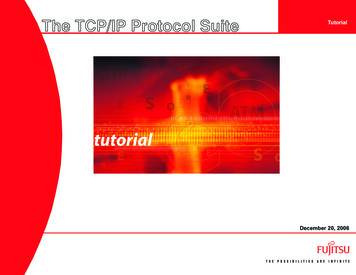
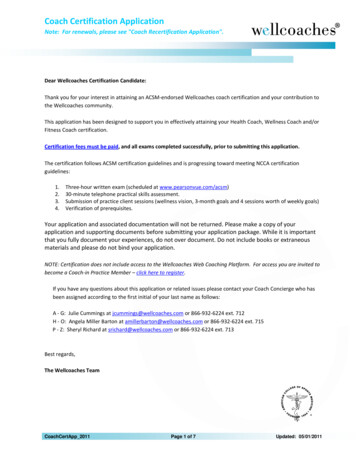
![[MS-OFBA]: Office Forms Based Authentication Protocol](/img/3/ms-ofba.jpg)
